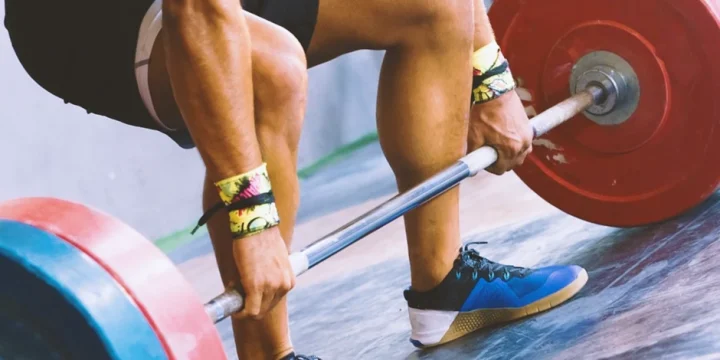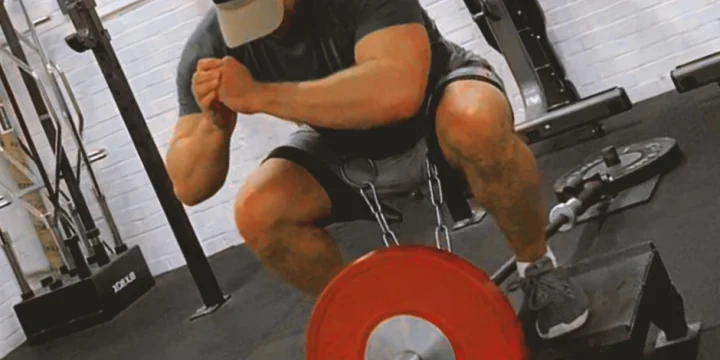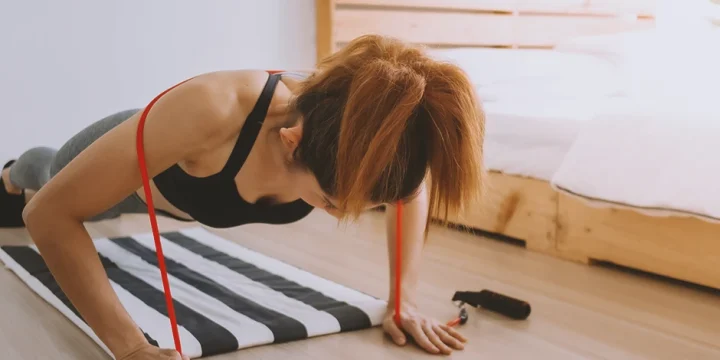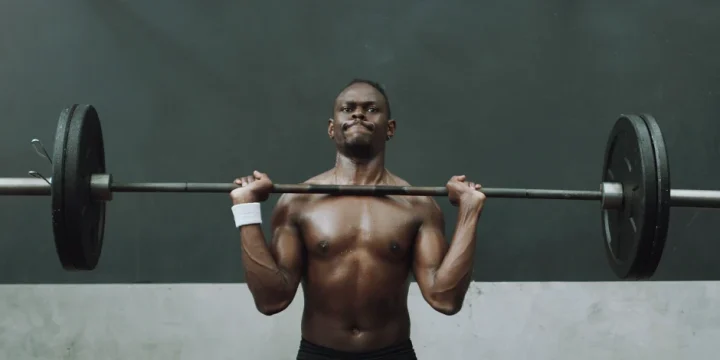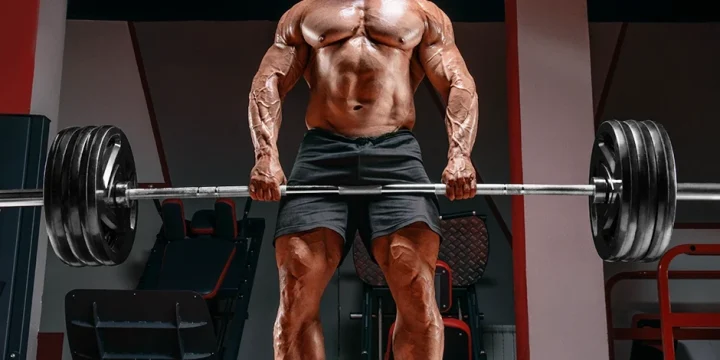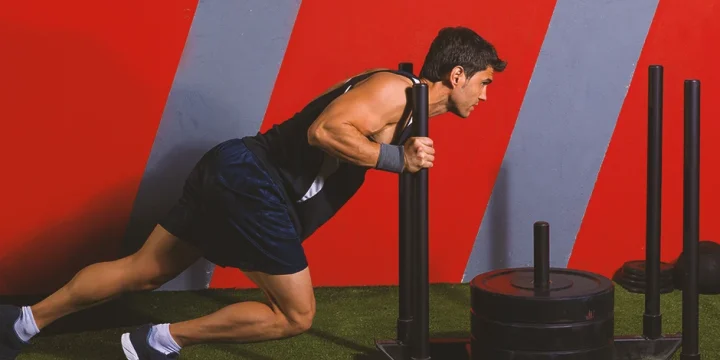Decline push-ups are one of the best chest-builder exercises to try, but you have to perform them in their proper form to effectively engage your upper chest muscles and avoid pain and injury.
One of the perks of this exercise is that you get to modify it according to your experience or fitness level. Plus, pairing it with a high-quality protein supplement can further enhance muscle growth and recovery.
I spent hours digging into articles and doing research to give you this complete guide on properly performing decline push-ups. Let's go!
Quick Summary
- To effectively build upper chest muscles and improve shoulder health, decline push-ups, performed with feet elevated, are a superior exercise choice.
- Decline push-ups, more challenging than basic push-ups, target the upper pectoralis major and front deltoids, creating more resistance with body weight.
- Research in the International Journal of Exercise Science indicates that the decline push-up's angle leads to a shorter moment arm and a limited range of motion, intensifying the workout.
- Personally, I've found that incorporating decline push-ups into routines significantly enhances core strength and overall upper-body stability.
What is a Decline Push-up?
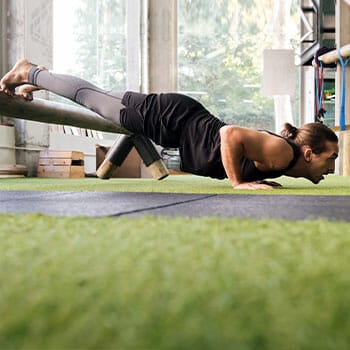
The decline push-up is a more challenging variation of the basic push-up, performed with your feet on an elevated surface using a bench, chair, or something similar, as stated in the research in the International Journal of Exercise Science [1].
The decline pushup targets the upper chest, particularly the pectoralis major, and the front shoulders or the front deltoids.
Forcing your upper pectoral muscles and deltoids to work intensely increases upper body strength.
Decline vs. Regular Push-Up
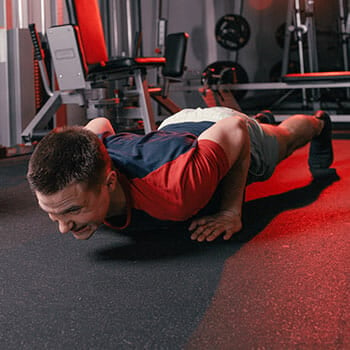
Basic pushups and decline pushups both engage the upper chest, shoulders, arms, and upper back muscles.
However, with the decline variation, the change in angle puts more work on the upper pecs and the front deltoids.
Another thing is that you're pushing a higher percentage of your bodyweight with decline pushups than with regular push-ups.
It means you are creating more resistance using just your body weight with the decline variation.
Compared to the regular or incline variation (incline pushups are done with your body on an elevated surface), the decline pushup is a much tougher variation, especially when the angle gets steeper.
The decline push-up is more akin to a decline bench press due to the shoulder flexion angle at the start of the push-up being less than 90 degrees. This leads to a shorter moment arm and a limited range of motion [2].
How to Do Decline Push-Ups
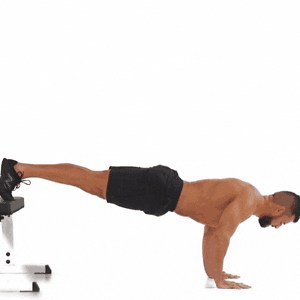
Here's your step-by-step guide to doing decline push-ups with the proper technique.
You will need a bench, a chair, a box, or something similar for a raised surface. It can be as low as an inch or two or as high as 1 or 2 feet.
In my coaching, I advise beginners to start with a lower surface for decline push-ups and gradually increase height as their upper body strength improves, a technique I've seen work wonders.
Exercise tip: Perform basic pushups as a warm-up to prepare the muscles for training and get into a smooth and steady motion.
- Position yourself facing away from the bench and place your hands on the ground shoulder-width apart, about 45 degrees.
- Place your feet on top of the bench. Move until your body is extended, and make sure to keep it in a straight line.
- With your core braced, keep your body straight as you bend your elbows to lower your chest to the floor.
- Push against the floor until your elbows are straight, returning to the starting position. Repeat as many reps as recommended.
Recommendation
Complete at least 2-4 sets and begin with lightweight to moderate repetitions, such as 8 to 20 repetitions.
Decline Push-up Variations

I recommend tailoring your decline push-up to fit your fitness level or goals for optimal results.
1. Easier Decline Push-ups: Start with basic push-ups to nail the form. Once you've got that down, try decline push-ups with a low elevation, like a couple of inches, to ease into it.
2. Tougher Decline Push-ups: Crank up the challenge by raising the height. Mix in these fun variations:
- Stability Ball Push-up: Use a stability ball for incline push-ups to fire up your core.
- Medicine Ball Push-up: Place one hand on a medicine ball for a shoulder-stabilizing twist.
- Clapping Push-up: Launch off the ground and clap mid-air for a power-packed push-up.
Common Mistakes

- Hips Off: If your hips sag or rise, it's a core strength issue. Work on your plank or try simpler push-up versions.
- Elbow Lock: Don't lock your elbows at the top; keep them slightly bent to protect your joints.
- Neck Alignment: Keep your neck in line with your spine to avoid strain.
- Hand Position: Hands too far forward strain your shoulders. Keep them under your shoulders and elbows at a 45-degree angle.
Related: Triceps Push-Ups 101 Guide
Benefits of Decline Push-Ups

Builds Strong Upper-Chest Muscles
Decline push-ups target your pec major muscles, making daily pushing tasks easier and reducing injury risk.
Improves Shoulder Health
Shoulder exercises like decline push-ups improve posture and strengthen shoulder muscles, vital for joint health.
Engages the Entire Core
Having a ripped and strong core goes beyond the six-pack abs; it has ripple effects that improve your life's overall quality.
“Having a strong core is crucial for better posture, better balance, and moving around with more ease. It helps you feel a whole lot better.”
- Laura Pachnos, Instructor at Solidcore & Yoga & Pilates Teacher
Neurological Benefits of Decline Push-Ups
Decline push-ups boost neuromuscular coordination and neural drive, enhancing muscle control.
Impact on Respiratory Muscles
From my observations, regular decline push-up practice strengthens respiratory muscles, notably enhancing lung capacity and efficiency, which are crucial in both daily activities and sports.
References:
- https://www.ncbi.nlm.nih.gov/pmc/articles/PMC5857441/
- https://www.ncbi.nlm.nih.gov/pmc/articles/PMC7196742/
About The Author
You May Also Like
